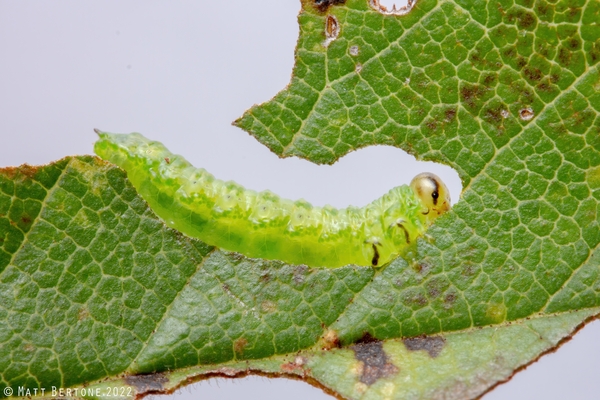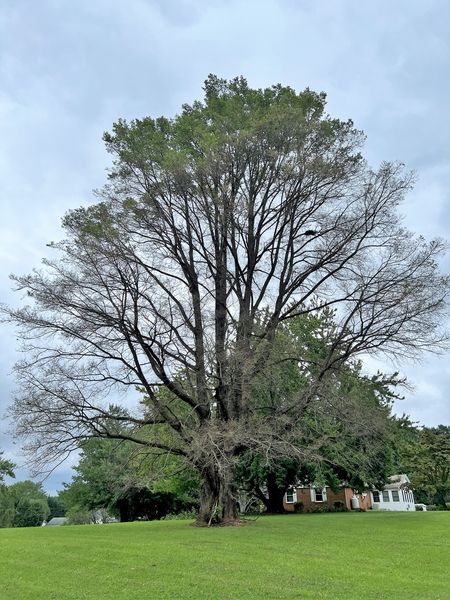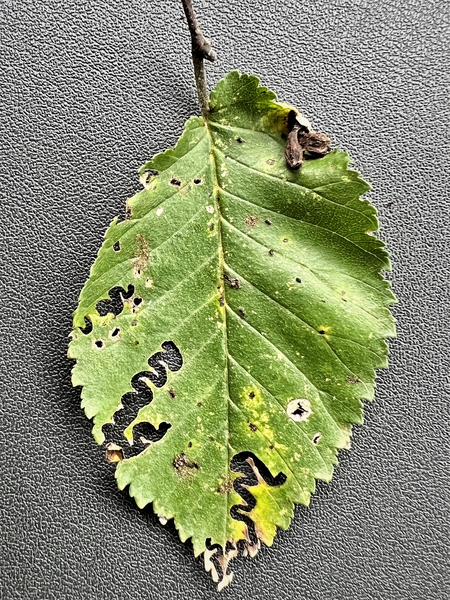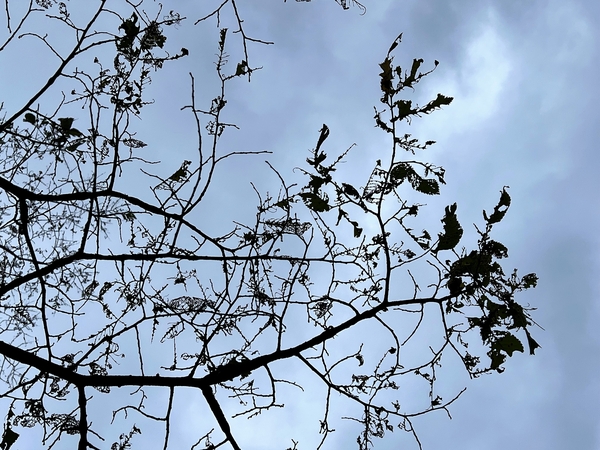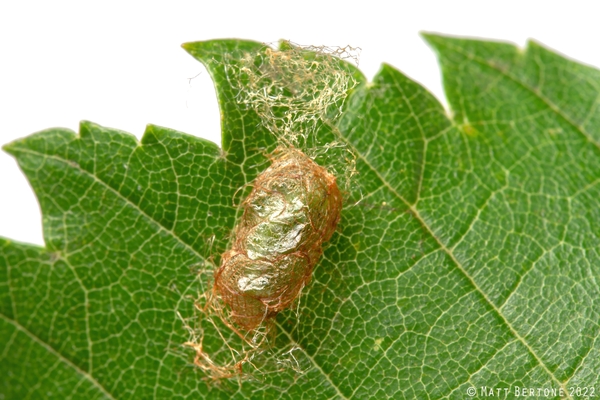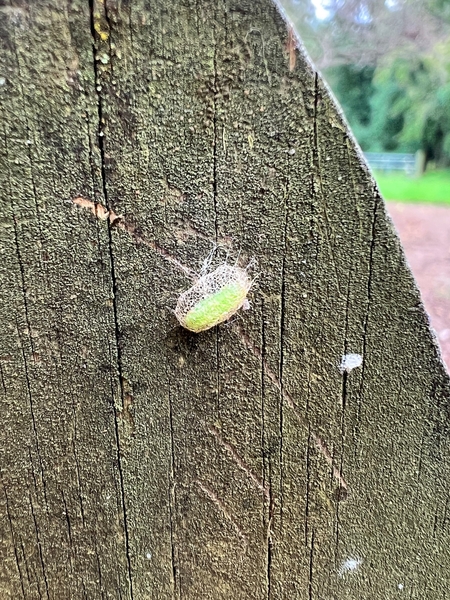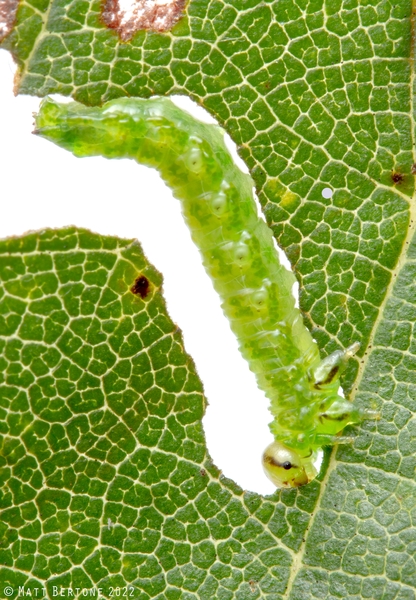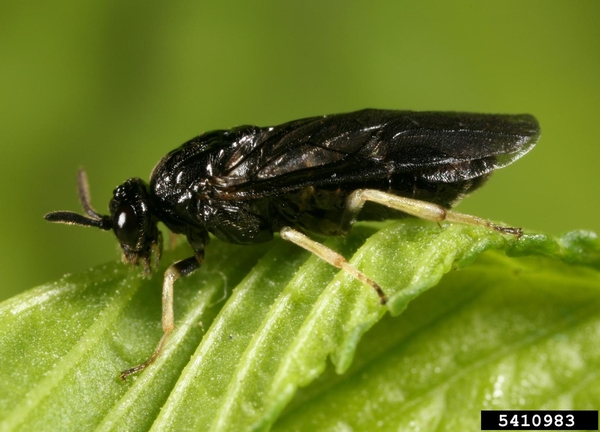Introduction
The elm zigzag sawfly (Aproceros leucopoda Takeuchi ; Hymenoptera: Argidae) is an invasive insect from East Asia that feeds on and defoliates elm trees (Ulmus spp.). It was first detected in North America in Québec, Canada in 2020 and has since been confirmed in Virginia, North Carolina, Maryland, Pennsylvania, New York, Ohio, Vermont, and Massachusetts. It is also considered invasive in Europe, where it was first detected in 2003. Larvae can cause severe defoliation of host trees in areas where it has been introduced.
Host Plants
Elm zigzag sawfly larvae feed exclusively on the leaves of elm trees (Ulmus spp.). In North Carolina, hosts in the area where the initial infested occurred include American and winged elm (U. americana, U. alata, respectively). In Virginia, the most common host is Siberian elm (U. pumila), but it has also been recorded infesting Chinese elm (U. parvifolia), Ulmus 'Cathedral' Japanese X Siberian hybrid, and English elm (U. procera).
Damage and Symptoms
Young elm zigzag sawfly larvae create a characteristic (and namesake) zigzag pattern in leaves, while older larvae feed more broadly on leaf tissue, leaving behind only thick leaf veins and often eliminating the zigzag-shaped damage. Larval populations can grow quickly and, though they are small insects, outbreaks can defoliate large elm trees.
There are many unknowns when an invasive insect is detected in a new area. As a relatively new introduction, the impact of elm zigzag sawfly on their hosts in the Southeastern U.S. is unknown. In Europe, outbreaks regularly defoliate urban trees and large tracts of natural forest.
Generally, defoliated trees can recover from a defoliation event. However, if trees are heavily defoliated year after year, they may become weakened or stressed, which predisposes them to other pests or results in tree death.
Life Cycle
Adults reproduce parthenogenetically, meaning females reproduce without mating. No male elm zigzag sawflies have been observed. Females lay up to 60 eggs singly along the tips of elm leaf serrations. Within eight days, larvae emerge and begin feeding. Elm zigzag sawfly larvae have six instars and pupate within three weeks of emerging from the egg. Two types of cocoons may be formed: either a loosely-spun, net-like cocoon attached to leaves (created during summer months) or a solid-walled cocoon in leaf litter or soil (overwintering generation). In North Carolina, where heavy defoliation was observed in mid-August (2022), the net-like cocoons were attached to other objects (e.g., fence posts) in the absence of leaves, which had been consumed. Adults emerge within 10 days of cocoon creation. Research in Europe, upon which these life stage estimates are based, indicates a full generation can occur in less than a month (24-29 days).
Multiple generations of elm zigzag sawfly can occur per year, but the number varies. For example, in Virginia, two generations were observed in 2021 and one generation in 2022. In Nrth Carolina, at least four generations were observed in 2023. Lab-reared elm zigzag sawfly have up to seven generations per year, but field observations in Europe and Russia indicate up to four generations actually occur per year.
Identification
Elm zigzag sawfly larvae are small, 1.8 mm long and a grayish-white color after first emerging from the egg. Mature larvae are green with a black band on their head and T-shaped brown or black markings above the second and third pair of true legs. They can grow up to 10-11 mm long. Like all hymenopteran larvae, they have six thoracic legs and six or more pairs of fleshy prolegs on their abdomen. In contrast, lepidopteran larvae (butterflies and moths) have five or fewer pairs of fleshy prolegs on the abdomen.
Adult elm zigzag sawfly are small, shiny black, winged insects, reaching 7-8 mm long. There is a white patch on the underside of the thorax and a dark brown “upper lip". They have yellow to white legs with white tips and smoky-brown wings.
Range
Elm zigzag sawfly is native to East Asia, including Japan, eastern Russia, eastern China, and the Korean peninsula. It was first detected in Europe, where it is considered invasive, in 2003. It was first detected in North America in Québec, Canada in 2020 and has since been found in Virginia in 2021, North Carolina, Maryland, Pennsylvania, and New York in 2022, and Ohio, Vermont, and Masshucsetts in 2023.
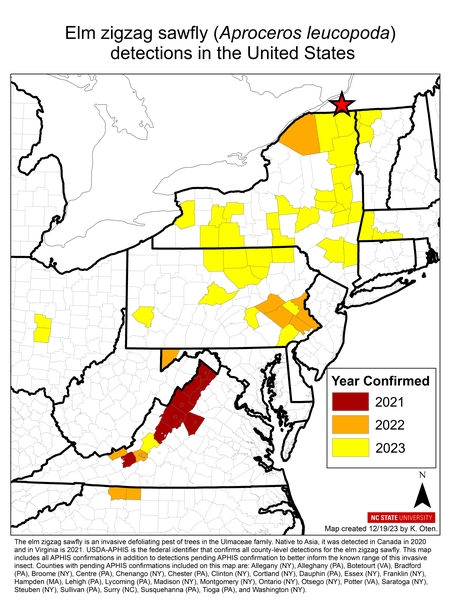
Range of elm zigzag sawfly in the US as of January 2024. Red star indicates first confirmation of EZS in Canada in 2020.
Kelly Oten, NC State University CC BY 4.0
Management
Most trees can recover from sporadic or minor defoliation events and therefore, control may not be warranted. As a new invasive species, little is known about effective management for elm zigzag sawfly. In Hungary, control was achieved with deltamethrin and teflubenzurin on the first generation of elm zigzag sawfly (Blank et al. 2010). In Romania, field applications of the entomopathogenic fungus Beauvaria bassiana (Bals.) Vuill. resulted in dose-dependent reduction of elm zigzag sawfly populations (Fătu et al. 2020). Bioassays by Del Pozo-Valdivia et al. (2022) in Virginia demonstrated 83% mortality with foliar applications of dinotefuran.
Homeowners may consider managing for elm zigzag sawfly to reduce aesthetic damage. Small populaitons can be removed by hand. For heavy infestations or large trees, a general-purpose insecticide labeled for use on trees and shrubs can be used. Treatments should occur in the spring as soon as larvae are present.
References
Blank, S.M., H. Hara, J. Mikulás, G. Csóka, C. Ciornei, R. Constantineanu, I. Constantineanu, L. Roller, E. Altenhoffer, T. Huflejt, and G. Vétek. 2010. Aproceros leucopoda (Hymenoptera: Argidae): An East Asian pest of elms (Ulmus spp.) invading Europe. Eur. J. Entomol. 107(3):357-367.
Del Pozo-Valdivia, A. I., D. Calpo, and M. Sutphin. 2022. Effect of afidopyropen and dinotefuran on elm zigzag sawfly control. Arthropod. Manag. Tests (in press).
Fătu, A. –C., G. Cardaş, C. Ciornei, and A. –M. Andrei. 2020. Experimental field application of Beauvaria bassiana (Bals.) Vuill. for control of the invasive sawfly Aproceros leucopoda Takeuki, 1939 (Hymenoptera: Argidae) in Romania. Acta Zool. Bulg. 72: 661-666.
Martel, V., O. Morin, S. Monckton, C. Eiseman, C. Béliveau, M. Cusson, and S. Blank. 2021. Elm zigzag sawfly, Aproceros leucopoda (Hymenoptera: Argidae), recorded for the first time in North America through community science. Can. Entomol. 154: E1.
Papp, V., M. Ladányi, and G. Vétek. 2018. Temperature-dependent development of Aproceros leucopoda (Hymenoptera: Argidae), an invasive pest of elms in Europe. J. Appl. Entomol. 142:589-597.
Publication date: Aug. 31, 2022
N.C. Cooperative Extension prohibits discrimination and harassment regardless of age, color, disability, family and marital status, gender identity, national origin, political beliefs, race, religion, sex (including pregnancy), sexual orientation and veteran status.

